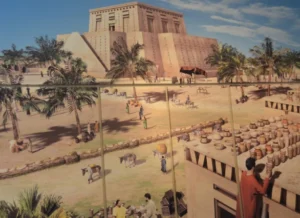Sacred Waters: Bali’s Pura Ulun Danu Bratan

I visited yesterday, dated October 13, 2024, the Pura Ulun Danu Bratan Temple. It was an amazing experience and especially the sunset was amazing. For tourism point of view there are alot of travellers to this amazing temple.
Ms. Farahaya read my poems from the “Romantic Whispers of the Archipelago” on the edge of the lake Bratan.
So, next to the lake Bratan on the western coast, is Pura Ulun Danu Bratan, which is not only one of the most gorgeous temples in Bali but it is also one of the most significant. The significance of this temple to the Balinese can be said to be quite symbolic since it is located adjacent to a lake that was created by a volcanic eruption or hydroclastic activity approximately 20,000 years ago. This is one of the nine Pamedecan or Directional temples of Kahyangan Jagat that are essential in preserving the balance between the physical and the spiritual on the island.
This is not just a religious statue but also an archeological proof and a holy place for Balinese agriculture. One of the most important sacred places of the island is the temple which serves as the main worship and administrative center for all subak councils that take charge of the irrigation of the rice fields which form a significant part of Bali’s geography. Its importance is such that the temple is depicted on the back of the fifty-thousand rupiah banknote to ascertain it’s importance and role in Indonesian culture.
The name ‘Pura Ulun Danu’ means the ‘Head Temple of the Lake’ due to its highly significant role. It is well documented in the Indonesian Literature from the Center for Preservation of Cultural Values and the Lontar Chronicle of Mengwi that the temple was built in around 1634 by Anak Agung Putu who was not the ruler of Mengwi kingdom at the time of King Agung Anom.
The existence of the story surrounding the temple is varied and relative to the various culture that is being practiced in the area. Historical records from the Pande family, who are expert in black smithing, revealed that their ancestors are the founder of Pura Ulun Danu Bratan. In a bid to embrace this belief, they later erected a Buddhist stupa in the northwest of the temple in the 1950s.
It is important to mention that, irrespective of the authorship of this temple creation, the Pura Ulun Danu Bratan proper was rapidly constructed to serve as one of the most important ritual places for the Mengwi kingdom. The kingdom, as was common with many other kingdoms in Bali, ruled over geographical areas from the central highlands down to the southern coastal strip including moist areas that are each necessary in the production of agriculture. Sungi and Penet rivers, which were originated from near the Lake Bratan, were essential for this irrigation system.
The Linga Petak is perhaps the most visually fascinating part of the temple and is a small structure built on an island that extends from the shores of the lake. In this shrine area, there are two meru towers, which are believed to enshrine Dewi Sri and Vishnu as the god who controls water fertility for the Mengwi kingdom’s success in agriculture.
It is from historical records that the Mengwi kingdom had relinquished control of the Lake Bratan region in the late 18th or early 19th century – a very important ‘ritual axis’ from the mountains to the sea. To maintain the balance of the water cycle the Mengwi kings established a make-believe temple called the pasimpangan at Tinggan on the slope of Mount Manggu situated about 3 kilometers east of Pura Ulun Danu Bratan. Another pasimpangan shrine was constructed to ensure the continuity of these important rituals of the Oral tradition on the southern coast while Tinggan has lost its link with the Lake Bratan gradually.
Today, the Pura Ulun Danu Bratan temple complex comprises five temples of Hindus and one Buddhist stupa. Facing the Linga Petak on the lake is Penataran Agung shrine which is for the Tri Purusa figure of Shiva and it has the seven stepped Meru and some buildings. Other significant temples are Taman Beji, Prajapati, and the Dalem Purwa shrine that located on the south of the lake devoted to Dewi Durga and Dewa Ludra.
Being one of Bali’s historical temples, Pura Ulun Danu Bratan continues to be an iconic landmark of Balinese culture and religion, while serving as a sanctuary of peace for tourists coming from all over the world.


